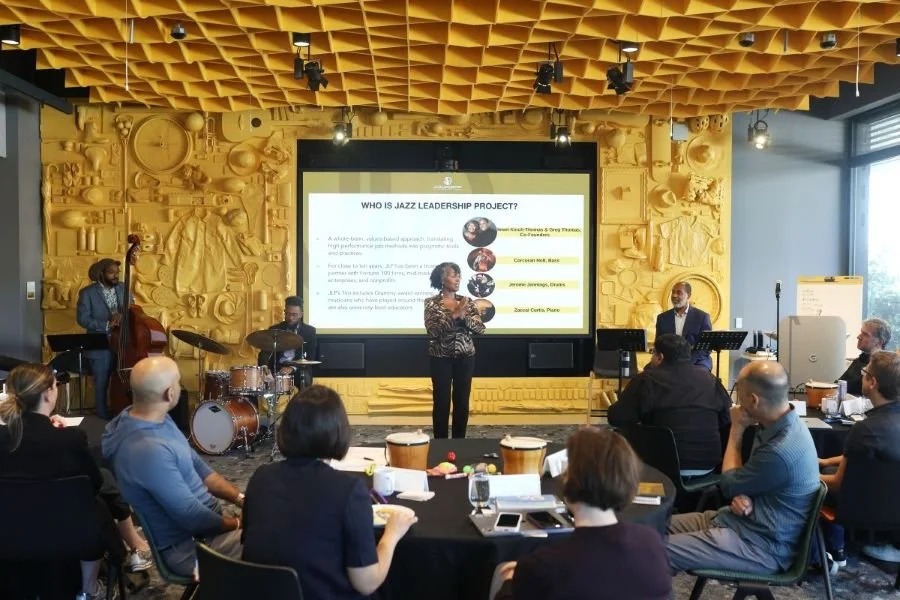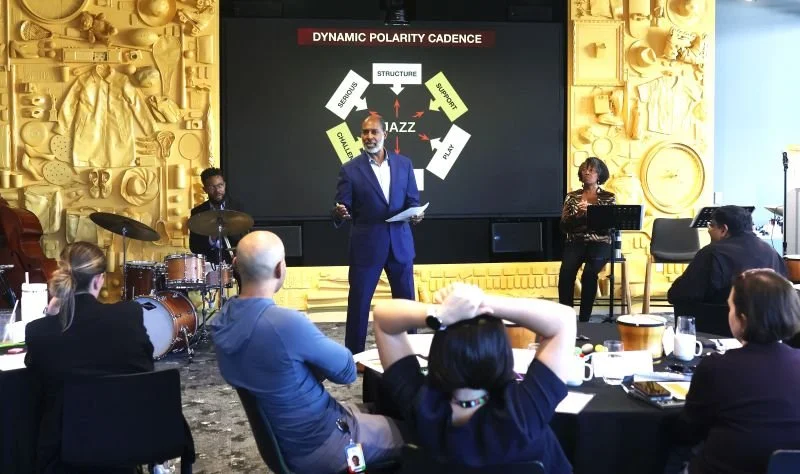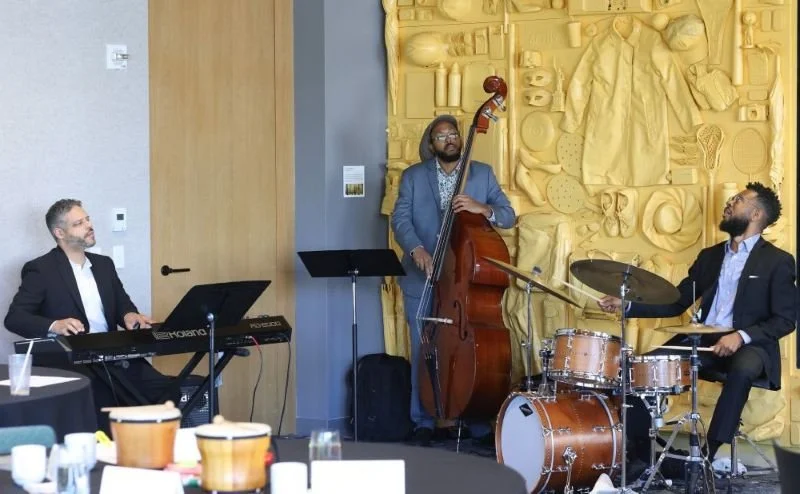The Art and Science of Envisioning Your Best Future
In New York City last week, our Jazz Leadership Project hosted a culminating workshop for a group of Google VPs gathered to tackle their “turbulent challenges,” which involve simultaneously managing internal transformations, external pressures, and rapidly evolving AI transformations. Another common challenge was conflicting stakeholder interests; Jewel’s post last week previewed an exercise we devised to address that challenge, “Orchestrating Your Stakeholder Ecosystem”:
If we orchestrate stakeholders, both internal and external, as a co-creative ecosystem, we can better understand the connections and interplay that provide insights, strengthen performance, and serve as a catalyst for swingin’ outcomes.
—Jewel Kinch-Thomas
Today, you’ll go behind the scenes for another interactive exercise we devised to support the executives: Their Ideal Future State.
Setting the Stage
Whether their challenges concerned silos in their organizations of hundreds to thousands of people, breakdowns in trust resulting in uncertainty, or those mentioned above, the VPs had been provided with tools and peer support during their four-day residency sponsored by Google’s Executive Services team. Our afternoon session was preceded by small consulting group breakouts, in which their peers offered “feedforward” advice, suggestions, and potential experiments focused on ways to confront their turbulent challenges in the immediate to mid-term future.
The JLP Trio: Zaccai Curtis, Corcoran Holt, Jerome Jennings
We, along with the JLP Trio, explained the integrative and foundational function of the rhythm section in jazz ensembles, from small to large, and equated their feedforward peer groups with the collective intelligence of the rhythm section. A jazz rhythm section provides support while also challenging each other and soloists to rise to the occasion. We extended and elaborated the analogy by inviting each consulting group of VPs and members of Executive Services to come forward, one at a time, as the JLP Trio funked out the opening phrases of Herbie Hancock’s “Chameleon.”
Vision Prospection and the RAS
However, before they stepped up to the microphone along with their “rhythm section consulting group,” the men and women VPs considered what it would feel like, look like, and sound like for their turbulent challenges to have been successfully met and overcome. As the JLP Trio played a ballad softly in the background, the executives wrote out an “Ideal Future State” story in their JLP workbooks to concretize their vision for successfully addressing their challenges.
A step beyond just ideation and thought, writing out visions of achievement inscribes them, making them more tangible. The reticular activating system (RAS) of our brains is set in motion, which makes us more alert to information aligned with such visions. This, in turn, filters out distractions and effectively bridges subconscious intentions with conscious perception. We were striving to inspire motivation, enhance focus, and heighten awareness of relevant cues—such as suggestions from their peers in the feedforward conversations—needed to achieve their visions.
Stepping to the Mic to Take a Solo
Upon this foundation of quiet prospection, we transitioned to the stand-and-deliver phase of public declaration. Surrounded by their consulting group and in front of their cohort of fellow leaders, each VP vocalized their vision of heroically facing and overcoming complex challenges. Their personal visions became a collective energy, their individual courage multiplied through mutual support, and what could have been isolated aspirations were woven together into a shared purpose.
As each leader completed their statements, their peers co-signed, clapped, and tapped the congas at their tables. At the same time, the JLP trio alternated between Dizzy Gillespie’s “Manteca” and Tito Puente’s “Ran Kan Kan” in short interludes of celebration.
Tapping into Jazz as Ritual
The process of jazz improvisation, in which a soloist makes their aesthetic statement while a rhythm section provides a responsive, grounding framework, is akin to a social and spiritual ritual. Rituals facilitate individual transformation through collective participation. The soloist, in this context, is like a ceremonial leader, channeling spiritual, emotional, and cultural energies through improvisation. At the same time, the rhythm section channels and transforms these energies—much like a ritual community supporting its leader.
For the Ideal Future State interactive exercise, each leader took turns as a soloist and as members of the rhythm section, creating a virtuous circle and cycle of collaborative leadership. The advice, suggestions, and insights they’d received from their feedforward group were like keys, notes, and chords which they used to compose their own melodies of successful resolution: their Ideal Future State.
Those melodies, those written personal visions, those stories, provided a foundation of clarity and commitment to face their challenges straight, no chaser. Bringing these documented visions into a ritual setting of deep listening and serious play added layers of validation, accountability, collaborative possibility, and communal support.
The Ideal Future State exercise demonstrates that transformation occurs through the dynamic interplay of personal clarity and communal witness. By orchestrating these elements—written vision, public declaration, peer support, and ritual—leaders create conditions where individual aspirations channel into collective momentum, turning turbulent challenges into catalysts for breakthrough innovation and growth.




